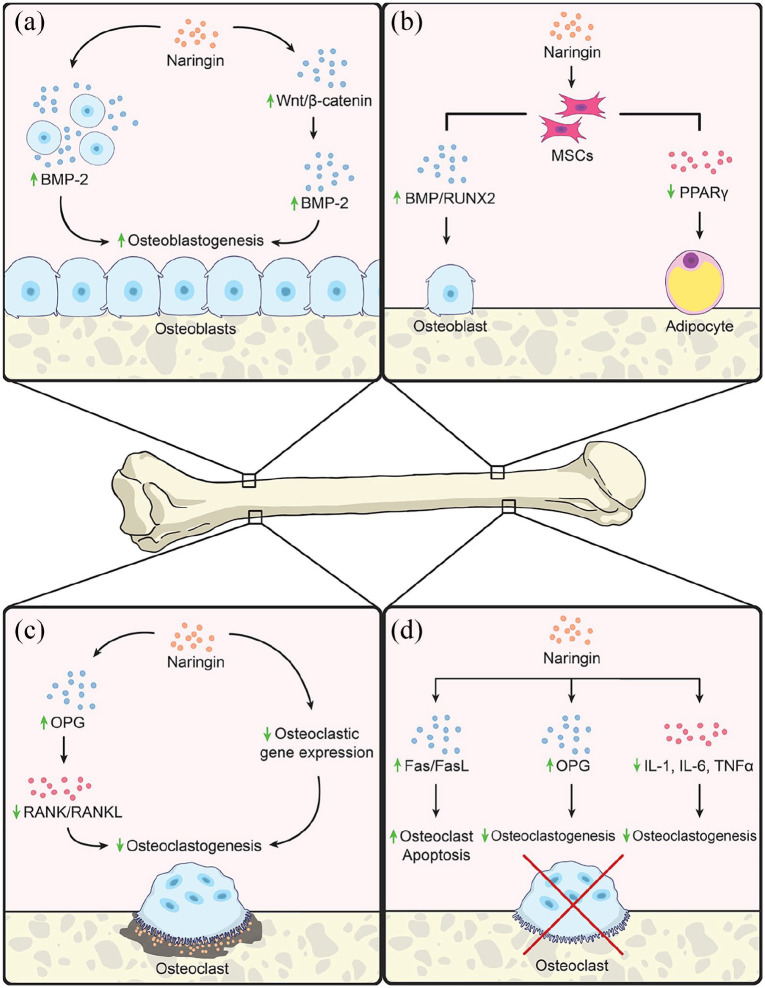Figure 1.
In vitro effects of naringin. (a) Naringin has been shown to increase osteoblastogenesis and thus bone anabolism. Naringin increases osteoblastogenesis through upregulating BMP-2, a protein responsible for the differentiation of MSCs down an osteoblastic lineage, directly and by stimulating the Wnt/β-catenin pathway which converges on further upregulation of BMP-2. (b) MSCs grown in the presence of naringin demonstrate increased osteoblastogenesis and decreased adipogenesis. MSCs in the presence of naringin express increased levels of osteoblastic genes such as BMPs and RUNX2 and decreased gene expression of the adipogenic PPARγ. (c) Naringin has been shown to decrease osteoclastogenesis and thus osteolysis in osteoclastic pathologies, such as osteoporosis in menopause and diabetic osteoporosis. Naringin decreases osteoclastogenesis by inhibiting RANK/RANKL interaction by inducing expression of the receptor decoy OPG as well as directly decreasing expression of osteoclastic genes. (d) Physiological levels of estrogen maintain bone stock in females by inducing osteoclast apoptosis and decreasing inflammatory cytokines that are osteoclastogenic; therefore, the loss of estrogen results in osteoporosis due to increased osteoclastogenesis. Through interactions with estrogen receptor α, naringin increases interactions between the death receptor Fas and its ligand FasL which increases osteoclast apoptosis, which tips bone homeostasis from a catabolic to an anabolic state, like endogenous estrogen. Naringin also decreases the inflammatory cytokines IL-1, IL-6, and TNF-α that stimulate osteoclastogenesis.
BMP-2, bone morphogenic protein 2; IL, interleukin; MSC, mesenchymal stem cell; OPG, osteoprotegerin; TNF, tumor necrosis factor;

